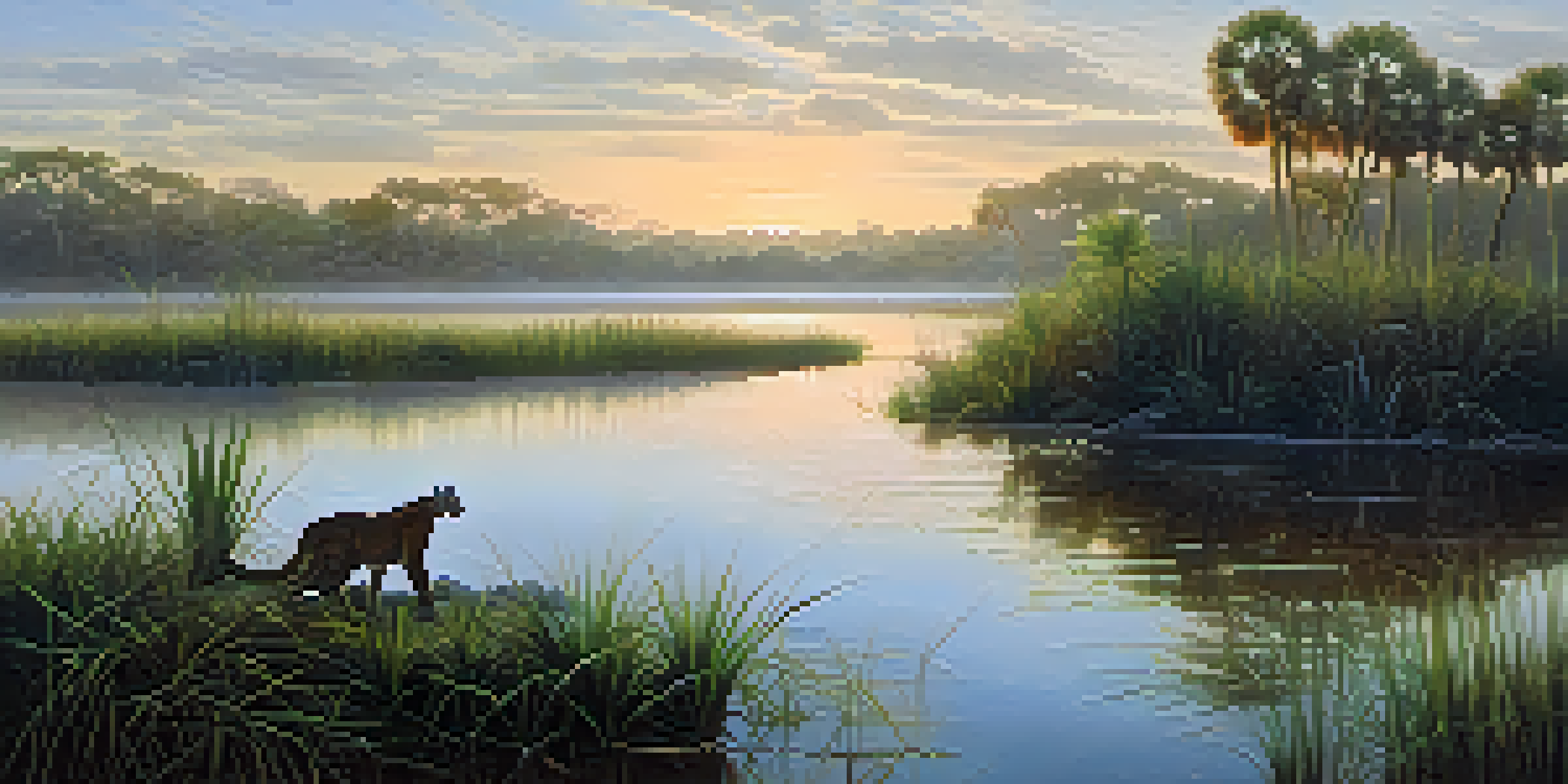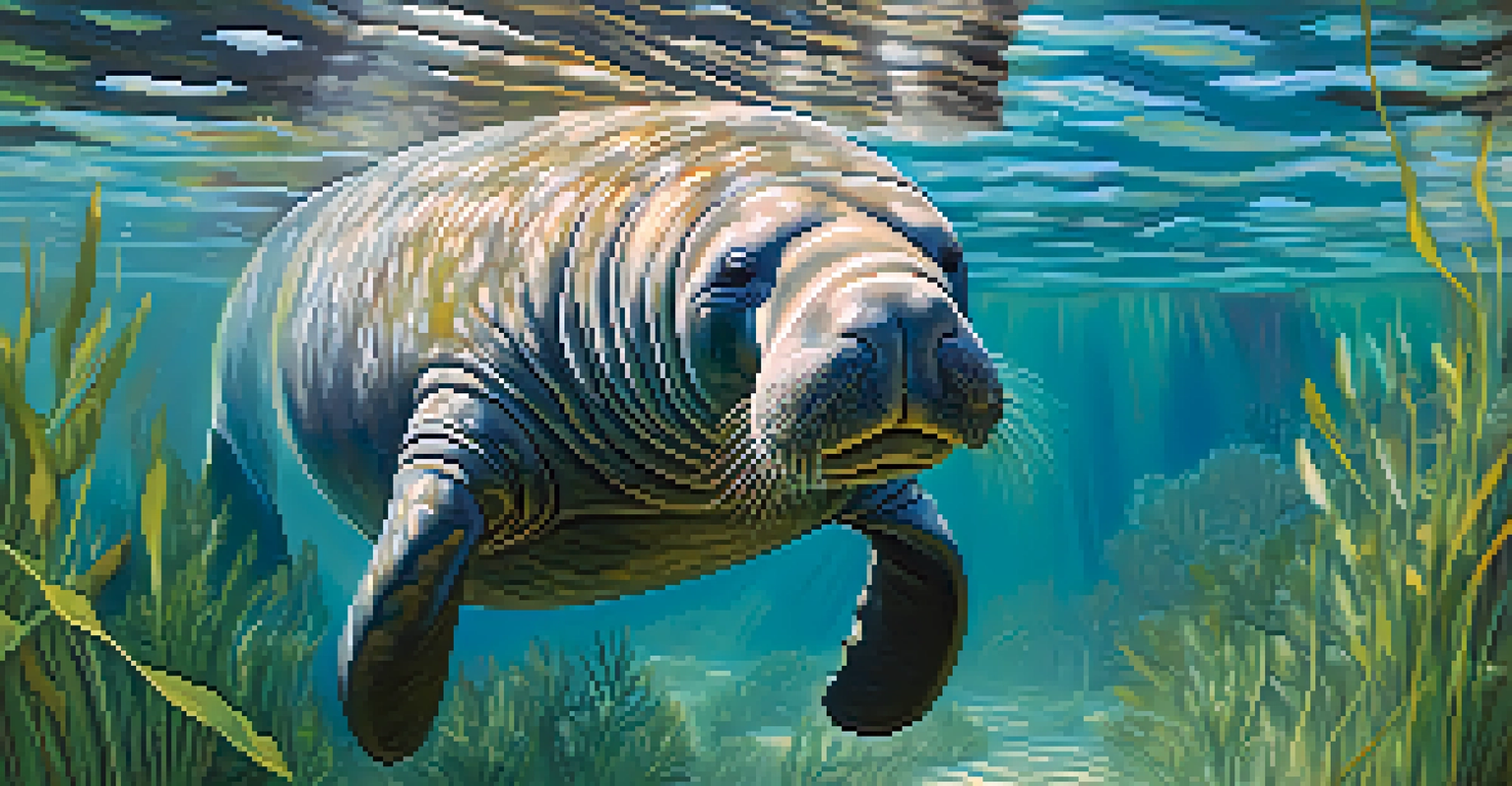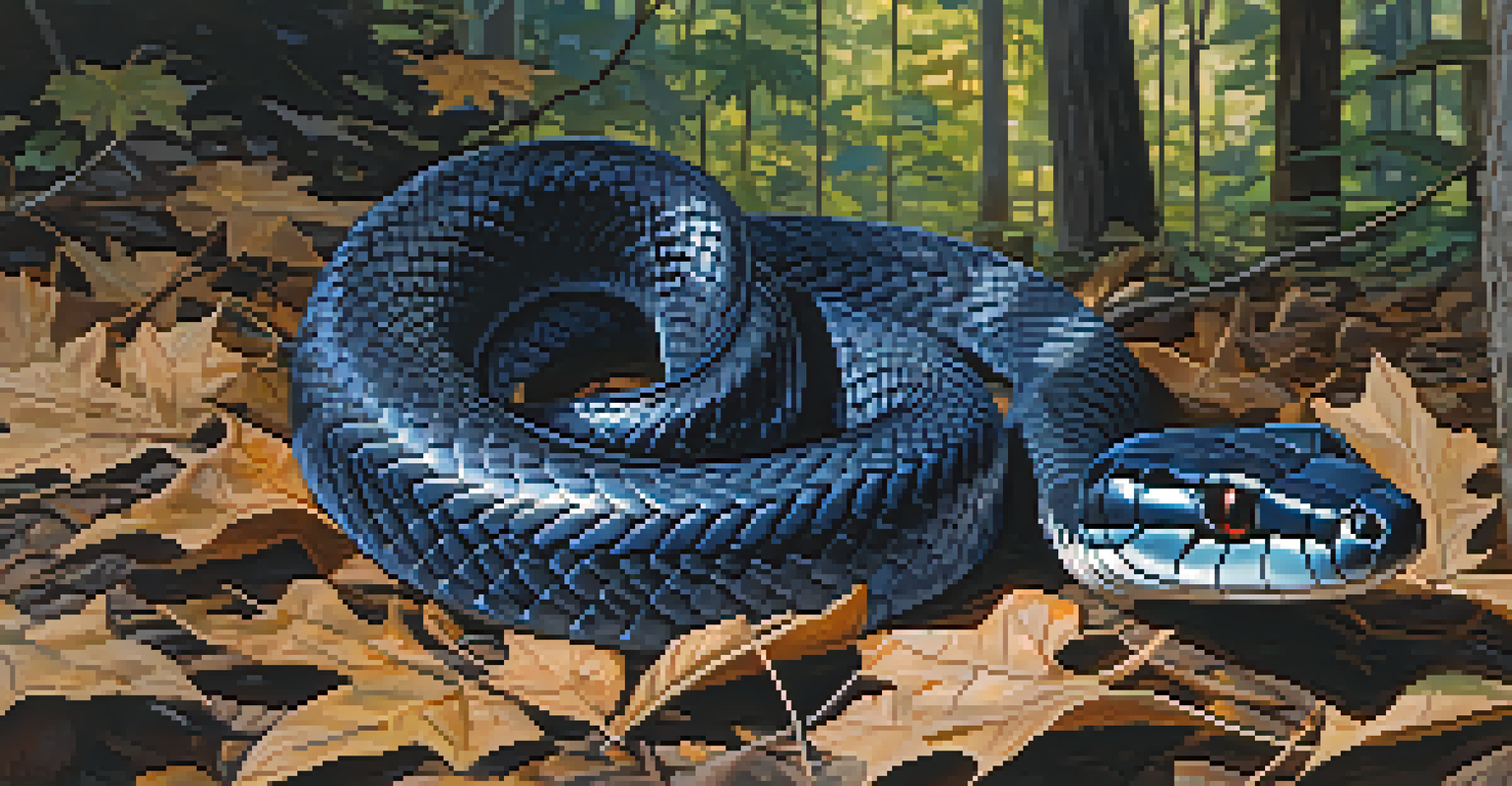Endangered Species in Florida: Challenges and Conservation Efforts

Understanding Endangered Species in Florida
Florida is home to a diverse range of wildlife, but many species are facing the threat of extinction. Endangered species are those at risk of disappearing from the planet, and in Florida, this includes iconic animals like the manatee and the Florida panther. These species have unique habitats and ecological roles, making their survival crucial for the overall health of the environment.
In nature, nothing exists alone.
The reasons behind their endangered status often stem from human activities, including habitat destruction, pollution, and climate change. For instance, urban development can lead to the loss of critical habitats, forcing these animals to adapt to smaller, more fragmented areas. Understanding the challenges they face is the first step toward effective conservation.
Awareness and education play vital roles in conservation efforts. By learning about these species and their needs, we can foster a sense of responsibility and encourage actions that support their protection. This knowledge not only helps in preserving wildlife but also enriches our appreciation for Florida’s natural beauty.
Key Endangered Species in Florida
Several unique species are listed as endangered in Florida, each with its own story. The Florida panther, for example, is a symbol of the state’s wildlife but has dwindled to a mere few hundred individuals due to habitat loss and inbreeding. Similarly, the manatee, often referred to as a gentle giant, faces threats from boat collisions and habitat degradation.

Another notable species is the Eastern indigo snake, the longest native snake in the U.S. This striking snake is threatened by habitat destruction and the decline of its prey, such as the gopher tortoise. Protecting these species not only helps maintain biodiversity but also supports the ecosystems they inhabit.
Florida's Wildlife Faces Serious Threats
Endangered species in Florida, such as the manatee and Florida panther, are at risk due to habitat loss, pollution, and climate change.
The plight of these animals highlights the urgency of conservation efforts. Each species plays a vital role in its ecosystem, and their disappearance can lead to unforeseen consequences for other wildlife and plant species. By focusing on these key endangered species, we can better understand the broader implications for Florida’s natural environment.
The Impact of Habitat Loss on Wildlife
Habitat loss is one of the most significant threats to endangered species in Florida. As urban areas expand, natural habitats like wetlands and forests are often destroyed or fragmented. This not only displaces wildlife but also limits their access to food, water, and breeding sites, which can lead to population declines.
What we are doing to the forests of the world is but a mirror reflection of what we are doing to ourselves and to one another.
For instance, the once-thriving wetlands that are home to various endangered species are being drained for agricultural and residential development. This loss of habitat is particularly detrimental to species like the Florida snail kite, which relies on specific wetland ecosystems for survival. Without these habitats, many species face an uphill battle against extinction.
Restoration efforts are essential to mitigate habitat loss. By reestablishing natural landscapes and creating protected areas, we can help provide safe spaces for wildlife to thrive. These initiatives are crucial for ensuring that future generations can enjoy Florida's rich biodiversity.
Climate Change and Its Threat to Wildlife
Climate change poses an increasing threat to Florida’s endangered species. Rising temperatures, changing precipitation patterns, and sea-level rise all impact ecosystems and the species that inhabit them. For example, the loggerhead turtle is affected by warming ocean temperatures, which can disrupt nesting sites and hatchling survival rates.
Moreover, many species are unable to migrate to cooler areas due to habitat fragmentation. The Florida panther, for instance, has limited geographical range, making it vulnerable to climate-induced changes. As the environment shifts, these animals face additional stressors that can hinder their chances of survival.
Community Involvement is Crucial
Successful conservation efforts rely on community engagement and collaboration among organizations to protect Florida's endangered species.
Conservation strategies must incorporate climate resilience to effectively protect endangered species. This means not only preserving current habitats but also anticipating future changes and creating adaptive management plans. By prioritizing climate considerations, we can enhance the chances of survival for Florida’s unique wildlife.
Invasive Species: A Growing Concern
Invasive species are another significant challenge for Florida's endangered wildlife. These non-native species can outcompete, prey on, or bring diseases to native species, disrupting the delicate balance of local ecosystems. The Burmese python, for instance, has established a strong presence in the Everglades, posing a direct threat to native wildlife.
As these invaders proliferate, they can drastically alter food webs and habitat structures, impacting the survival of endangered species. The gopher tortoise, a keystone species in Florida’s ecosystems, faces threats from invasive plants and predators that disrupt its burrowing habitats. This can lead to cascading effects on other species reliant on the tortoise for survival.
Efforts to manage and control invasive species are crucial for protecting Florida’s biodiversity. Public awareness campaigns and community involvement can help in identifying and reporting invasive species, allowing for timely intervention. By tackling this issue, we can create a more hospitable environment for endangered species to recover and thrive.
Conservation Efforts and Success Stories
Despite the challenges, numerous conservation efforts are underway in Florida to protect endangered species. Organizations like the Florida Fish and Wildlife Conservation Commission (FWC) work tirelessly to monitor populations, restore habitats, and implement breeding programs. These initiatives have shown positive results, such as the recovery of the American crocodile, which was once on the brink of extinction.
Community involvement plays a significant role in these efforts. Local volunteers often participate in habitat restoration projects, wildlife monitoring, and public education campaigns. For example, events like the Great American Cleanup engage residents in cleaning up local habitats, benefitting both wildlife and the community.
Simple Actions Can Make a Difference
Individuals can contribute to conservation by reducing waste, supporting local organizations, and practicing responsible outdoor habits.
Collaboration between government agencies, non-profits, and citizens is essential for successful conservation. By pooling resources and knowledge, these groups can address the multifaceted challenges faced by endangered species. Together, they are creating a brighter future for Florida’s wildlife.
How You Can Help Endangered Species in Florida
Every individual can play a part in the conservation of endangered species in Florida. Simple actions, such as reducing waste, recycling, and using eco-friendly products, can help minimize pollution and protect natural habitats. Additionally, supporting local conservation organizations through donations or volunteering can amplify these efforts.
Becoming an advocate for wildlife is another impactful way to contribute. Educating others about the importance of endangered species and the actions needed to protect them can inspire collective action within communities. Participating in local wildlife surveys or outreach programs can also raise awareness and support conservation initiatives.

Lastly, responsible outdoor practices are vital. When enjoying Florida’s beautiful natural spaces, remember to stay on designated trails, avoid disturbing wildlife, and follow guidelines for sustainable recreation. By making mindful choices, we can ensure that future generations will have the opportunity to experience and appreciate Florida’s incredible biodiversity.